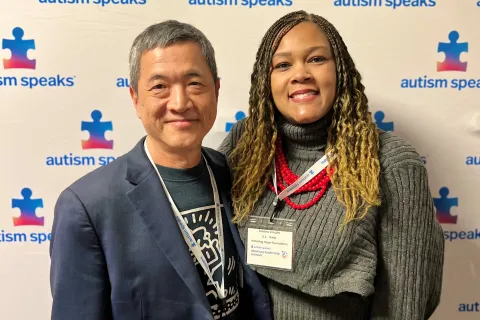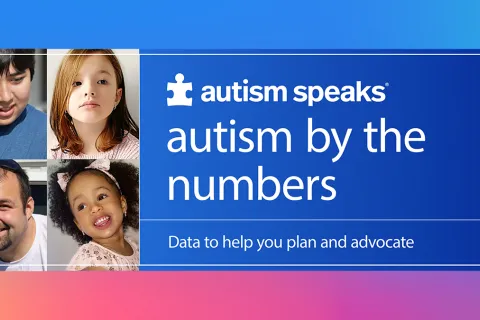My child is nonverbal. Anything new that might help him communicate better?
By speech-language pathologists Cynthia Green, Kameron Beaulieu, and Jill DolataThe answer below comes from speech-language pathologists Cynthia Green, Kameron Beaulieu, and Jill Dolata of the Autism Speaks Autism Treatment Network (ATN). Their ATN work at the Oregon Health & Science University’s Child Development and Rehabilitation Center involves individualized parent training using a 24-week program that improves children’s social communication skills.
My child is nonverbal. Anything new that might help him communicate better?
Today, parents and therapists have many new applications and devices that support a child’s nonverbal communication. First and foremost, however, we strongly recommend an insightful look at how your nonverbal child communicates—in other words, how he sends messages to others.
As you and other parents of children with autism know well, non-verbal does not mean non-communicative. So we always want to start with a good understanding of children’s current communication level before attempting to help them move to the next level.
We regularly use the Communication Matrix, a skills assessment designed to evaluate children’s communication abilities. This tool is unique in measuring all possible communicative behaviors, including: pre-intentional (involuntary actions, including crying when wet or hungry); intentional (actions such as fussing and turning away that are not primarily intended for communication); unconventional (tugging, crowding to get attention); conventional communication (head nodding, pointing, etc.); concrete symbols (pantomime, “buzzzzz” to mean “bee”); abstract symbols (single words, manual signs); and language (oral and written word combinations, American Sign Language).
To be successful communicators, children need to see that their actions influence those around them, and they must want to communicate. Sometimes, it’s difficult to determine when nonverbal children are sending intentional messages—particularly when they prefer to play by themselves, engage in self-stimulating behaviors or have difficulty sustaining interactions.
Autism nonverbal communication programs
There are several programs designed to initiate positive interactions and increase communication in children with autism, including First Things First, Indirect Language Stimulation, DIR/Floortime, the Hanen program, the Early Start Denver Model, and the Autism Parent Training Program. These programs have many similar components including putting yourself at your child’s eye level, allowing your child to direct activities (following his lead), and imitating your child’s behavior. These strategies help forge a connection of interests between you and your child and can support your child’s desire to communicate.
Once children communicate using concrete or abstract symbols, they may benefit from having access to additional communication tools. It helps to remember that we all use a variety of communication methods, including eye contact, facial expressions, body language, tone of voice and gestures. So you might want to start with a system of gestures or sign.
Nonverbal communication tools
Other low-tech tools include picture symbols and PECS . Some children seem to respond to tangible symbols such as an actual key for “let’s go outside” or a cup for “I’d like a drink.” From the use of tangibles, families can move to photographs of familiar items and eventually to more abstract symbols. Children at this stage may benefit from Tangible Symbol Systems.
Finally, parents and therapists now have access to a number of technological devices and options, from a tape player with simple buttons for playing prerecorded messages and keyboards for typing messages to sophisticated voice output devices and specialized iPhone/iPad applications.
We hope you’ll have fun exploring these options with your child, ideally under the guidance of a therapist well versed in the best evidence-based practices.
Readers are urged to use independent judgment and request references when considering any resource associated with diagnosis or treatment of autism or the provision of services related to autism. Autism Speaks does not endorse or claim to have personal knowledge of the abilities of references listed. The resources listed in these pages are not intended as a referral, or endorsement of any resource or as a tool for verifying the credentials, qualifications, or abilities of any organization, product or professional. The contents of this blog are solely the responsibility of the authors and do not necessarily represent the official views of Autism Speaks, the Autism Treatment Network and/or the Autism Intervention Research Network on Physical Health.









